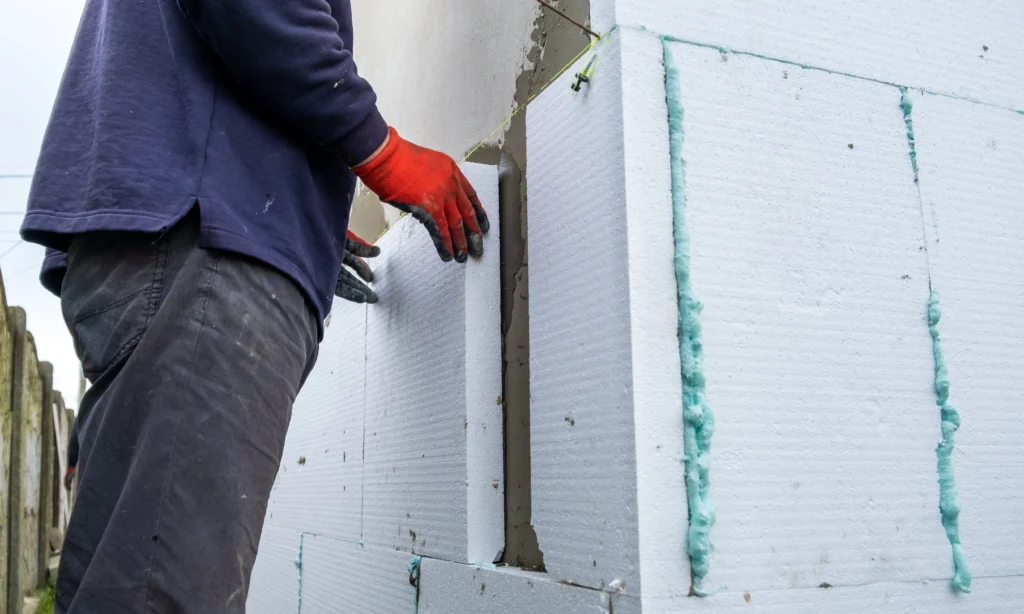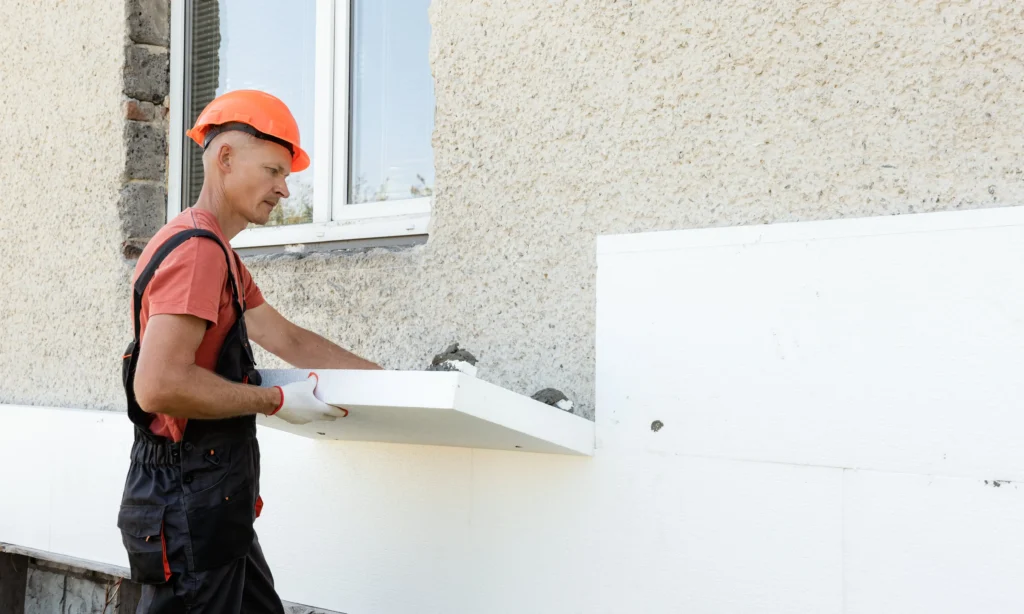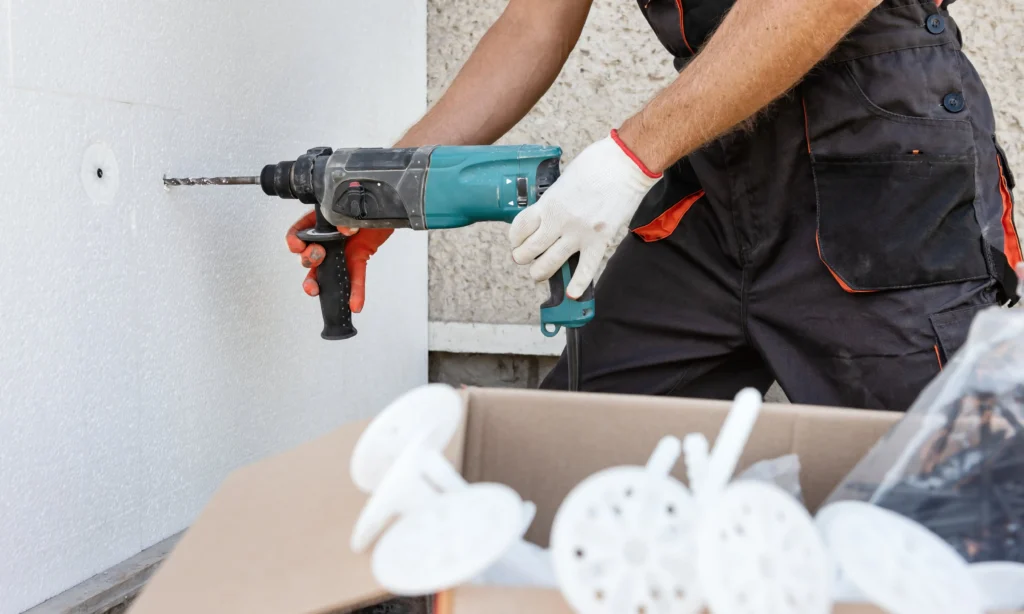Sarah from Manchester learned the hard way that not all external wall insulation installations are created equal. After spending £14,000 on what seemed like a professional job, she discovered water damage behind her new render system just 18 months later. The repair costs? Another £8,000 and months of disruption. Her story isn’t unique – thousands of UK homeowners face external wall insulation problems that could have been prevented with proper planning and professional installation.
Understanding common external wall insulation problems UK homeowners encounter can save you from costly mistakes and ensure your investment delivers the energy savings and comfort improvements you’re expecting. While external wall insulation is highly effective when installed correctly, poor workmanship or inappropriate system selection can lead to serious issues that are expensive and disruptive to fix.
The key to avoiding these problems lies in understanding what can go wrong, why it happens, and how to prevent issues before they occur. From moisture-related failures to thermal bridging and render system problems, each issue has specific causes and proven prevention strategies that can protect your investment and your home.

External Wall Insulation Problems UK Homeowners Face: The Root Causes
Moisture problems represent the most serious threat to external wall insulation systems, often developing gradually and remaining hidden until significant damage occurs. Interstitial condensation, where moisture condenses within the wall structure, can lead to reduced insulation performance, structural damage, and indoor air quality issues that affect your family’s health.
The primary cause of moisture problems is inadequate vapor control during system design and installation. When warm, moist air from inside your home meets cold surfaces within the wall structure, condensation occurs. This is particularly problematic in older properties where existing walls may have different moisture characteristics than modern construction materials.
Poor detailing around windows, doors, and other penetrations creates another common source of moisture ingress. Without proper sealing and weather-resistant barriers, water can penetrate the system and become trapped, leading to rot, mold growth, and insulation failure. The best external wall insulation materials include appropriate vapor barriers and breathable components that manage moisture effectively.
Prevention requires careful system design that considers your property’s specific moisture characteristics. This includes selecting appropriate insulation materials, ensuring proper vapor barriers, and creating adequate ventilation pathways for any moisture that does penetrate the system. Professional assessment of your existing wall construction is essential for identifying potential moisture risks before installation begins.
Installation Defects: Where Good Materials Go Wrong
Even high-quality external wall insulation materials can fail if installation standards are compromised. Poor fixing techniques represent one of the most common installation defects, leading to system failure, thermal bridging, and potential safety hazards. Inadequate mechanical fixings or incorrect placement can allow insulation boards to move or detach over time.
Thermal bridging occurs when installation techniques create uninsulated pathways through the system. This commonly happens at fixing points where metal fasteners create direct thermal connections between internal and external surfaces. Poor joint sealing between insulation boards also creates thermal bridges that reduce system efficiency and can lead to condensation problems.
Base coat and mesh application errors frequently cause render system failures. Insufficient base coat thickness, poor mesh embedding, or inadequate curing time can lead to cracking, delamination, and water penetration. These issues often don’t become apparent until months or years after installation, making warranty claims difficult and expensive to resolve.
Quality control during installation is crucial for preventing these defects. This includes proper training for installation teams, regular supervision, and staged inspections throughout the process. Understanding external wall insulation costs helps you recognize when quotes are unrealistically low, often indicating corners will be cut during installation.
Render System Failures: When the Protective Layer Fails
The render system provides both weather protection and aesthetic finish for external wall insulation, making its proper performance critical for long-term success. Cracking represents the most visible render failure, often caused by inadequate base preparation, poor material selection, or thermal movement that exceeds the system’s flexibility.
Delamination occurs when the render system separates from the insulation substrate, usually due to contamination, inadequate surface preparation, or incompatible materials. This problem can affect large areas and typically requires complete render system replacement, making it one of the most expensive failures to address.
Color fading and chalking affect the aesthetic performance of render systems, particularly with certain pigments and environmental conditions. While not structurally critical, these issues can significantly impact your property’s appearance and may require early refinishing to maintain curb appeal.
Algae and biological growth can develop on render surfaces, particularly in areas with high moisture levels or limited sunlight. While modern render systems include biocides to prevent this, poor system selection or installation can create conditions favorable for biological growth that damages both appearance and performance.

Thermal Performance Degradation: When Efficiency Drops
External wall insulation systems can lose thermal performance over time due to various factors, reducing energy savings and comfort levels. Moisture infiltration causes insulation materials to lose their thermal resistance properties, with some materials being more susceptible than others to moisture-related performance degradation.
Settlement and compression of insulation materials can occur over time, particularly with certain foam-based systems. This creates gaps in the thermal envelope that allow heat loss and can lead to cold spots and condensation issues. The problem is often exacerbated by poor installation techniques or inadequate mechanical fixing.
Thermal bridging through fixing points and joints represents a design-related cause of performance degradation. While some thermal bridging is inevitable, poor system design or installation can create excessive thermal bridges that significantly reduce overall system efficiency.
Air infiltration through gaps and cracks in the system allows uncontrolled heat loss and can create drafts that affect comfort. This problem often develops gradually as building movement opens joints or poor-quality sealants degrade over time.
System Compatibility Issues: When Components Don’t Work Together
External wall insulation systems rely on compatibility between multiple components, and mismatched materials can lead to performance problems or system failure. Incompatible insulation and render systems may have different thermal expansion characteristics, leading to stress and potential cracking or delamination.
Substrate compatibility issues occur when insulation systems are applied to unsuitable wall constructions without proper assessment or preparation. Some wall types require specific preparation or cannot support certain insulation systems, leading to adhesion failure or structural problems.
Chemical incompatibility between system components can cause degradation over time, particularly with certain adhesives, sealants, or protective coatings. This problem often isn’t apparent during installation but develops gradually as chemical reactions weaken material bonds.
The importance of using manufacturer-approved system components cannot be overstated. Mixing components from different manufacturers or using non-approved alternatives can void warranties and lead to performance problems that are expensive to resolve.
Prevention Strategies: Protecting Your Investment
Preventing external wall insulation problems begins with proper system selection based on your property’s specific characteristics and requirements. This includes assessment of existing wall construction, moisture conditions, exposure levels, and aesthetic requirements that influence system choice.
Professional design and specification ensure that system components are properly matched and installation details are clearly defined. This includes proper detailing around windows, doors, and other penetrations that are common sources of problems in poorly designed systems.
Quality installation by certified professionals represents the most important factor in preventing problems. Working with professional external wall insulation UK specialists ensures proper installation techniques, appropriate quality control, and comprehensive warranty coverage that protects your investment.
Regular maintenance and inspection help identify potential problems before they become serious issues. This includes annual visual inspections, prompt repair of minor defects, and periodic professional assessments to ensure continued system performance.
Choosing the Right Installation Partner
The quality of your installation partner directly impacts the likelihood of encountering problems with your external wall insulation system. Certified installers with proper training and experience are essential for avoiding the common pitfalls that lead to system failures and costly repairs.
Look for installers who are members of recognized industry bodies such as the External Wall Insulation Association (EWIA) and can provide comprehensive warranties on both materials and workmanship. Proper insurance coverage and established business credentials provide additional protection for your investment.
Understanding the importance of proper external wall insulation fixings and installation techniques helps you evaluate potential contractors and ask informed questions about their approach to your project.

Long-term Success and Warranty Protection
Successful external wall insulation installations require ongoing attention to maintain performance and protect warranty coverage. Understanding warranty terms and requirements helps ensure you receive appropriate protection for your investment while maintaining system performance over time.
Documentation of installation procedures, materials used, and maintenance activities provides valuable protection for warranty claims and helps identify potential issues early. Professional installers should provide comprehensive documentation as part of their service.
Regular professional inspections and maintenance help identify potential problems before they become serious issues, protecting both system performance and warranty coverage. This proactive approach typically costs far less than reactive repairs after problems develop.
External wall insulation problems are largely preventable with proper planning, quality installation, and appropriate maintenance. While the initial investment in professional installation may seem higher, the long-term costs of addressing problems caused by poor workmanship or system selection far exceed the savings from choosing cheaper alternatives.
Understanding these common problems and their prevention strategies helps you make informed decisions about your external wall insulation project. By working with experienced professionals and maintaining realistic expectations about system performance and maintenance requirements, you can enjoy the energy savings and comfort improvements that properly installed external wall insulation provides for decades to come.
